|
The word "acoustics" (l'acousitique) was coined by French scientist Joseph Saveur (1653-1716) who first used it in a 1701 article to describe the science of sound and hearing, in the same way that Isaac Newton's word "optics" describes the science of light and sight.
Goscinny and Uderzo demonstrate that an the foundation of the French understanding and appreciation of acoustics was already present in 50 BC in the ancient Gaulilsh villiage where Asterix lives. In Asterix and the Normans Caconofix the bard demonstrates concern over whether or not the acoustic conditions are favorable for an outdoor musical concert at the top of a cliff. Apparently he knew things about outdoor sound propagation that later scientists like Tyndall and Rayleigh had to relearn for themselves.
|
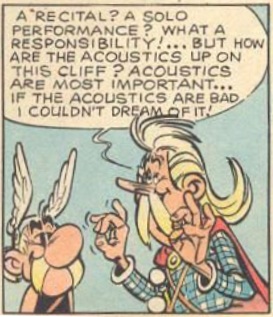
|
|
Cacfonix also shows an awareness of the important of room acoustics that would make Sabine proud. Here, in a scene from Asterix and the Magic Carpet, Caconifix is checking out the acoustics of his new hut which had been rebuilt after being destroyed when the village was burned to the ground.
|
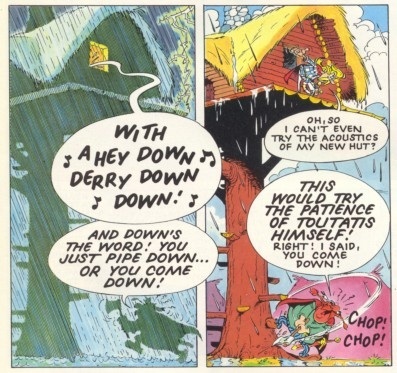
|
|
And, finally, as we finish up this look at musical instruments of antiquity as experience by Asterix the Gaul, there is evidence that music was much heavier back in ancient times than it is today. Here, in two frames from Asterix and the Goths and Asterix and the Secret Weapon Uderzo shows the bard sweeping old music out of his/her hut, and having it fall to the ground below. Perhaps these notes were the "exponential decay" left behind in the reveberation from previous musical performances inside the hut.
|
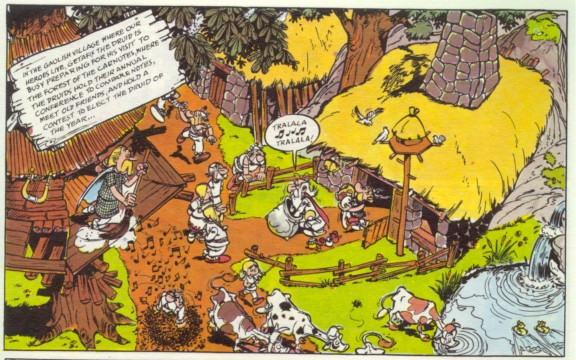
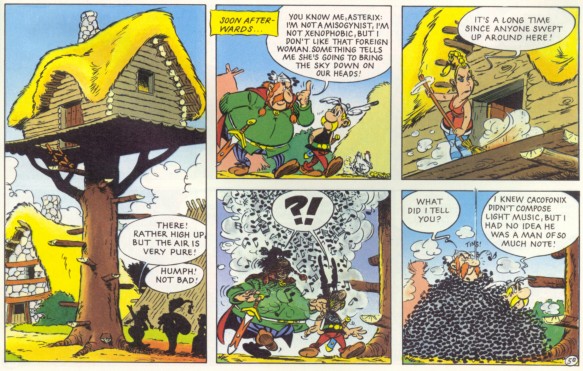
|
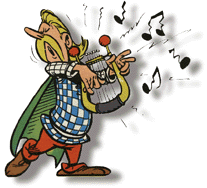





 Music in Asterix TOC
Music in Asterix TOC